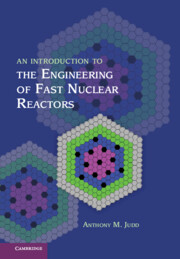1 - Physics
Published online by Cambridge University Press: 05 February 2014
Summary
Physics and Design
Whether the purpose of a fast reactor is to generate power, to breed fissile material, to consume fissile material or to consume nuclear waste products, whether its chain reaction is to be critical and self-sustaining or subcritical and driven by an external source of neutrons, reactor physics – the understanding of the nuclear reactions that take place in it – is fundamental to its design in two ways. Firstly, criticality is a question of reactor physics. The designer of the reactor has to determine the size and composition needed to make the reactor critical or to achieve the required degree of subcriticality, to predict the effect on reactivity of movement of the control rods and the burnup of the fuel, and to estimate the reactivity changes that come about in the course of normal operation and under abnormal conditions. Secondly, he or she has to know the rate at which various nuclear reactions take place, for on these depend the power generated and its distribution within the reactor, the burnup of the fuel, the breeding or destruction of fissile material and nuclear waste, the alteration of the properties of the materials of which the reactor is constructed, the build-up of radioactivity, and the need for radiation shielding.
Reactor physics is not, however, the only important influence on design. Heat transfer, structural, metallurgical, and safety considerations are also important, and the design ultimately chosen is a compromise. In reaching this compromise a designer's overriding aim is that the reactor should be as effective as possible in achieving its objectives, provided that it is safe.
Information
- Type
- Chapter
- Information
- Publisher: Cambridge University PressPrint publication year: 2014
